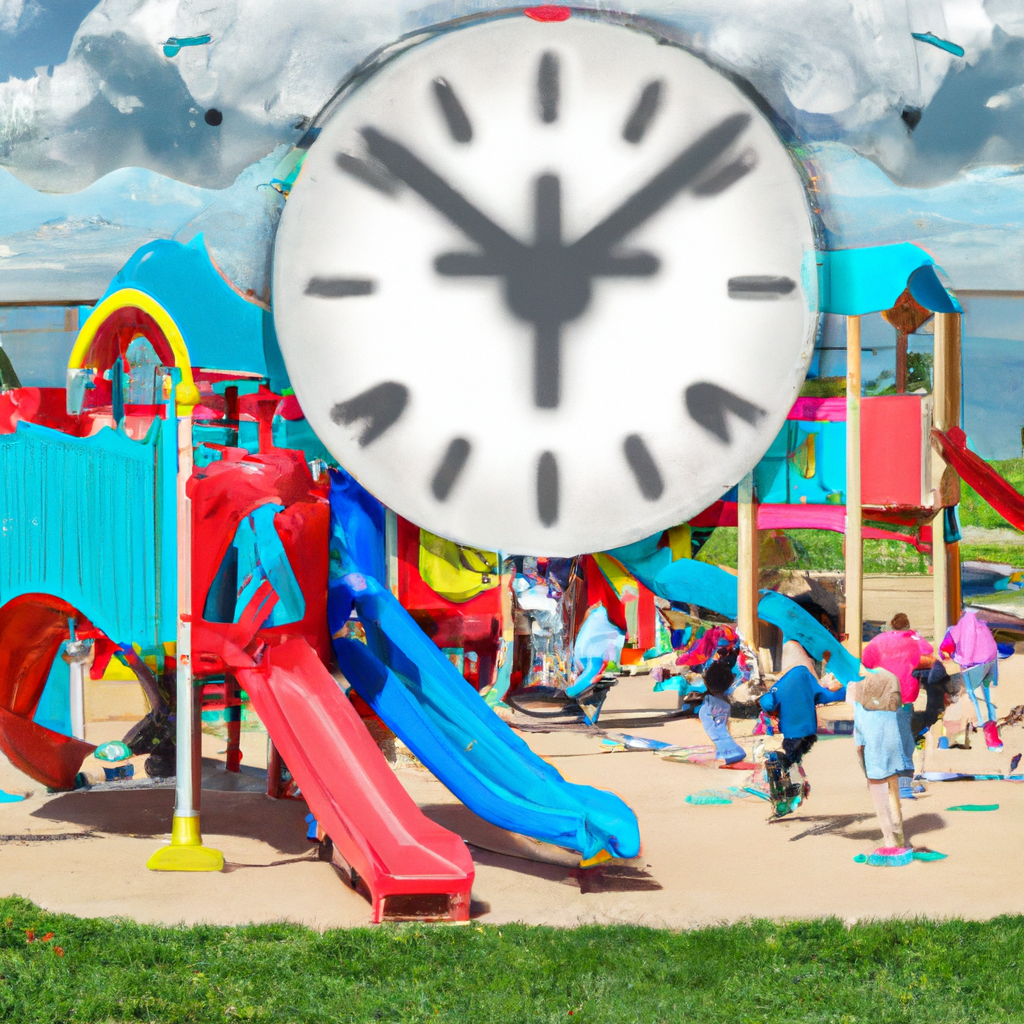The process of child development is a fascinating journey that shapes who we become as adults. From the moment we are born, our physical and mental abilities grow and evolve, laying the foundation for our future years.
In this article, I’ll guide you through the various stages of child development, exploring the physical, emotional, social, and language milestones that shape our little ones.
By understanding the importance of child development and the factors that influence it, we can better support and nurture our children’s growth.
Let’s embark on this enlightening adventure together!
Key Takeaways
- Child development involves physical, cognitive, emotional, and social changes from infancy to adolescence.
- Early childhood is a critical period for brain development, which lays the foundation for future learning and behavior.
- Social-emotional skills, such as empathy and self-regulation, are important for forming healthy relationships and problem-solving abilities.
- Physical and cognitive development, including motor skills and cognitive milestones, play a vital role in overall growth and well-being.
Definition of Child Development
Child development is the process of how you grow and develop as a person from infancy to adolescence. It involves the physical, cognitive, emotional, and social changes that occur as you progress through different stages of child development. These stages are characterized by specific milestones and skills that children typically achieve at certain ages.
Early childhood is a critical period in child development. Research shows that the experiences and interactions a child has during these early years have a profound impact on their long-term well-being and success. It is during this time that the brain is rapidly developing and forming connections, laying the foundation for future learning and development.
During the early childhood stage, children go through significant growth and development in various areas. They begin to develop language skills, refine their motor skills, and start to understand and regulate their emotions. They also start to form attachments, develop social skills, and learn how to interact with others.
Understanding the stages of child development is essential for parents, caregivers, and educators to provide appropriate support and guidance. By recognizing where a child is developmentally, we can tailor our interactions and activities to meet their needs and help them reach their full potential.
Transitioning to the subsequent section, it is important to explore the specific stages of child development and delve deeper into the milestones and skills children attain at each stage.
Stages of Child Development
As you go through the stages of development, you’ll notice significant changes in your physical and cognitive abilities. Stages of child development refer to the sequential and predictable patterns of growth and change that occur from infancy to adolescence. These stages are characterized by milestones in areas such as motor skills, language development, social-emotional growth, and cognitive abilities.
Early brain development is a crucial aspect of child development. During the first few years of life, a child’s brain undergoes rapid growth and development. This period is especially critical for forming neural connections, laying the foundation for future learning and development. The experiences and interactions a child has during this stage play a vital role in shaping their brain architecture and influencing their overall development.
From infancy to adolescence, children progress through several stages of development, each with its own unique characteristics and challenges. These stages include infancy (0-2 years), early childhood (2-6 years), middle childhood (6-11 years), and adolescence (11-18 years). Each stage builds upon the previous one and sets the stage for the next, with children acquiring new skills and abilities as they grow.
Understanding the stages of child development is essential for parents, educators, and caregivers. It provides valuable insights into what children are capable of at different ages and helps create appropriate environments and opportunities for their growth. By recognizing and supporting children’s developmental needs, we can foster their overall well-being and maximize their potential.
Moving forward, it’s crucial to recognize the importance of child development in shaping future outcomes and success. By investing in early childhood development and providing children with nurturing and stimulating environments, we can positively impact their lifelong trajectory.
Importance of Child Development
As a child development expert, I understand the vital importance of early brain development, social-emotional skills, and cognitive and physical milestones in a child’s life.
Research has shown that the early years are a critical period for brain development, where the foundation for future learning and behavior is laid.
The development of social-emotional skills helps children form healthy relationships, regulate their emotions, and navigate the complexities of the world.
Lastly, cognitive and physical milestones play a significant role in a child’s overall development, shaping their ability to think, problem-solve, and engage in physical activities.
It is crucial for parents, educators, and caregivers to understand and support these key aspects of child development to ensure optimal growth and well-being.
Early Brain Development
From birth, a child’s brain is rapidly developing and forming connections. Early brain development is a critical period where neural connections are formed at an astonishing rate. This process lays the foundation for future learning, behavior, and overall development.
Research shows that during the first few years of life, a child’s brain is highly receptive to external stimuli and experiences, shaping their cognitive abilities and emotional well-being.
As a parent or caregiver, understanding the importance of early brain development can guide you in creating a nurturing environment that supports optimal growth. By providing stimulating activities, responsive interactions, and a rich learning environment, you can help your child’s brain form strong neural connections and establish a solid foundation for social-emotional skills.
Building upon this foundation, children can develop healthy relationships, self-awareness, and emotional resilience.
Social-Emotional Skills
To support your child’s social-emotional skills, it’s important to provide opportunities for them to engage in positive interactions and develop healthy relationships.
Empathy development and self-regulation skills are crucial aspects of their social-emotional growth. Empathy, the ability to understand and share the feelings of others, can be nurtured through modeling and encouraging perspective-taking.
Teaching children to regulate their emotions and behavior helps them navigate social situations effectively. This includes recognizing and managing their own emotions, understanding the impact of their actions on others, and developing problem-solving skills.
By fostering empathy and self-regulation skills, we empower children to form meaningful connections and navigate conflicts in a healthy manner.
As they build a strong foundation in social-emotional skills, they will be better prepared to tackle the cognitive and physical milestones that lie ahead.
Cognitive and Physical Milestones
You can encourage your child’s cognitive and physical milestones by providing them with stimulating activities and opportunities for active play. Cognitive development refers to the growth and maturation of a child’s mental processes, including their ability to think, reason, and solve problems. Gross motor skills, on the other hand, involve the development of large muscle groups and coordination, such as crawling, walking, and running. By engaging your child in activities that promote cognitive development and gross motor skills, you can help them reach important milestones in these areas.
Here is a table that highlights some examples of activities that can support cognitive development and gross motor skills:
| Cognitive Development | Gross Motor Skills |
|---|---|
| Puzzle solving | Playing catch |
| Sorting and matching | Riding a bike |
| Reading and storytelling | Jumping on a trampoline |
| Building with blocks | Dancing |
By providing your child with these types of activities, you are nurturing their cognitive abilities and physical capabilities. These milestones are crucial for their overall development and will contribute to their success in various aspects of life.
As we explore the factors influencing child development, it is important to understand the role of genetics and environment in shaping a child’s growth and potential.
Factors Influencing Child Development
Factors like genetics, environment, and parenting styles can greatly influence child development. As a parent, it’s important to understand the impact that these factors can have on your child’s growth and development.
One of the key influences on a child’s development is their familial environment. The interactions and relationships within the family unit play a crucial role in shaping a child’s social, emotional, and cognitive development.
Additionally, cultural influences also play a significant role in shaping a child’s development. Cultural beliefs, values, and practices can influence how a child learns, communicates, and interacts with others.
Understanding the impact of familial and cultural influences on child development is essential for providing the best possible environment for your child to thrive. By recognizing and embracing the unique qualities and values of your family and culture, you can create an environment that nurtures and supports your child’s growth and development.
Now, let’s explore the next aspect of child development: physical development in children.
Physical Development in Children
One important aspect of your child’s growth is their physical development, which includes milestones like crawling, walking, and fine motor skills. As a parent, it is essential to understand the significance of physical development and how it contributes to your child’s overall well-being. Here are four key points to consider:
-
Gross Motor Skills: These are the larger movements involving the whole body, such as sitting, crawling, standing, and walking. Developing strong gross motor skills allows children to explore their environment, engage in physical activities, and build coordination and balance.
-
Fine Motor Skills: These are the smaller movements that involve the coordination of muscles in the hands and fingers. Activities like grasping objects, scribbling, and later on, writing, require well-developed fine motor skills. These skills are crucial for self-care tasks like feeding, dressing, and tying shoelaces.
-
Milestones: Children reach important physical milestones at different ages. It is important to remember that every child develops at their own pace. However, if you have concerns about your child’s physical development, it is always a good idea to consult with a healthcare professional.
-
Promoting Physical Development: As a parent, you can support your child’s physical development by providing a safe and stimulating environment. Encourage plenty of physical activity, offer toys and materials that promote fine motor skills, and engage in activities that encourage balance and coordination.
Understanding the significance of physical development in your child’s growth lays the foundation for their overall development. As we explore the next section on cognitive development in children, we will see how physical and cognitive development are interconnected in shaping a child’s learning and understanding of the world around them.
Cognitive Development in Children
As we delve into the topic of cognitive development in children, it’s important to understand how their thinking skills and abilities evolve over time. Cognitive development refers to the growth and progression of a child’s mental processes, including their ability to think, reason, and problem-solve. It is a complex and fascinating area of study that has been explored by numerous cognitive development theories.
One of the most well-known theories is Jean Piaget’s theory of cognitive development. Piaget proposed that children progress through distinct cognitive development milestones, which he called stages. These stages include the sensorimotor stage (birth to 2 years), the preoperational stage (2 to 7 years), the concrete operational stage (7 to 11 years), and the formal operational stage (11 years and beyond). Each stage is characterized by different cognitive abilities and limitations.
To better understand the progression of cognitive development, let’s take a look at a table that outlines the cognitive milestones in each stage:
| Stage | Cognitive Milestones |
|---|---|
| Sensorimotor | Object permanence, development of basic motor skills, understanding cause and effect |
| Preoperational | Symbolic thinking, egocentrism, animism, intuitive reasoning |
| Concrete Operational | Conservation, logical reasoning, classification and seriation |
| Formal Operational | Abstract thinking, hypothetical reasoning, metacognition |
By examining these milestones, we can gain insights into a child’s cognitive growth and better support their development.
Now, let’s transition to the subsequent section about emotional development in children.
Emotional Development in Children
As parents, we play a crucial role in shaping our children’s emotional development. Research has shown that the way we parent has a significant impact on our children’s emotional well-being. Our interactions with them, both positive and negative, can shape their ability to form healthy relationships and regulate their emotions.
Additionally, social and peer interactions also play a key role in a child’s emotional development, as they provide opportunities for children to learn important social skills and navigate the complexities of their emotions.
Impact of Parenting
The impact of parenting on child development is crucial for their overall well-being. As a parent myself, I understand the immense responsibility we have in shaping our children’s lives.
Research has shown that parenting styles play a significant role in a child’s development. The way we interact with our children, set boundaries, and provide emotional support can have long-lasting effects on their social, emotional, and cognitive development.
Attachment theory, developed by John Bowlby, emphasizes the importance of a secure and nurturing parent-child relationship. This bond serves as a foundation for healthy development and helps children develop trust, empathy, and resilience.
Understanding the impact of parenting styles and implementing positive strategies can greatly enhance a child’s overall development.
Now, let’s delve into the next section about social and peer interactions, which further influences their growth.
Social and Peer Interactions
Now, let’s explore how social and peer interactions shape a child’s growth and development.
Peer relationships play a crucial role in a child’s social and emotional development. Interacting with peers helps children learn important social skills such as communication, cooperation, and problem-solving. Through these interactions, children develop a sense of belonging, empathy, and self-confidence.
Research has shown that positive peer relationships contribute to better academic performance and mental health outcomes in children. It is important for parents and caregivers to support and facilitate healthy peer relationships by encouraging social interactions, providing opportunities for group activities, and teaching conflict resolution skills. By fostering positive peer interactions, we can help children develop crucial social skills that will benefit them throughout their lives.
Transitioning into the next section, emotional intelligence skills are closely linked to a child’s ability to navigate social relationships.
Emotional Intelligence Skills
You can enhance your emotional intelligence skills by being aware of your own emotions and understanding how they influence your interactions with others.
Emotional regulation is an important aspect of emotional intelligence, as it involves the ability to manage and control your emotions in a productive manner. By developing this skill, you can better handle difficult situations and maintain positive relationships.
Additionally, empathy skills are crucial for emotional intelligence. Empathy allows you to understand and share the feelings of others, which can improve your ability to connect and communicate effectively. By practicing empathy, you can foster stronger connections and build more meaningful relationships.
Understanding and improving these emotional intelligence skills can have a profound impact on your personal and professional life.
As we delve into the topic of social development in children, we will explore how these skills are crucial for their growth and well-being.
Social Development in Children
Social development in children involves learning how to interact with others and develop relationships. During this stage, children acquire vital social skills and navigate the complexities of peer relationships. As a child development expert, I have witnessed the profound impact that social development has on a child’s overall well-being and future success.
Research has shown that strong social skills are linked to positive outcomes in various areas of a child’s life, including academic achievement, mental health, and overall life satisfaction. Through social interactions with peers, children learn important life skills such as cooperation, empathy, and problem-solving. These skills enable them to build and maintain meaningful relationships, both now and in the future.
Peer relationships play a crucial role in social development. Interacting with peers allows children to practice important social skills, such as taking turns, sharing, and resolving conflicts. It also provides them with opportunities to develop a sense of belonging, self-esteem, and emotional support. Peer relationships can significantly influence a child’s social development by shaping their understanding of social norms, values, and expectations.
As children develop socially, they become more adept at expressing their thoughts and emotions, which leads us to the next aspect of child development: language development.
Language Development in Children
Language development in children is a fascinating process that involves acquiring and using words to communicate effectively. From the moment they are born, children start their journey of language acquisition and speech development. As a parent or caregiver, it’s important to understand the stages of language development and provide the necessary support to help children thrive in this area.
During the first year of life, infants begin to babble and make various sounds to explore their vocal abilities. They imitate the sounds they hear and gradually start to form recognizable words. By the age of two, most children can form simple sentences and express their needs and desires. As they grow older, their vocabulary expands, and they develop more complex language skills, such as storytelling and understanding abstract concepts.
It’s crucial to create a language-rich environment for children, where they are exposed to a wide range of words and experiences. Talking, reading, and singing to them regularly can have a significant impact on their language development. Engaging in conversations and asking open-ended questions can also encourage them to express themselves and develop their communication skills.
Promoting Healthy Child Development
As someone who has studied child development extensively, I understand the crucial role that early childhood education plays in promoting healthy child development.
Research has consistently shown that high-quality early education programs have a positive impact on a child’s cognitive, social, and emotional development.
However, it’s important to recognize that parental involvement and support are equally vital in ensuring optimal growth and well-being for children.
Early Childhood Education
You can learn important skills and concepts through early childhood education. The early childhood curriculum is designed to provide children with a strong foundation for their future learning and development. One of the key approaches used in early childhood education is play-based learning. This method recognizes that children learn best through play, as it allows them to explore, create, and interact with their environment. Play-based learning promotes the development of various skills such as problem-solving, communication, and social interaction. It also fosters creativity, imagination, and critical thinking. In fact, research has shown that children who engage in play-based learning during their early years tend to have better cognitive and social-emotional development. So, providing children with a play-based early childhood curriculum sets them up for success in their future educational journey.
| Skills Developed | Benefits of Play-Based Learning | Research Support |
|---|---|---|
| Problem-solving | Enhances cognitive abilities and critical thinking | Numerous studies have shown the positive effects of play on problem-solving skills |
| Communication | Improves language development and vocabulary | Research has indicated that play-based learning promotes better communication skills in young children |
| Social Interaction | Fosters social skills and empathy | Studies have found that children engaged in play-based learning exhibit better social interaction and empathy |
Early childhood education provides a solid foundation for children’s development, but it is not solely the responsibility of educators. Parental involvement and support play a crucial role in enhancing a child’s learning experience. By actively participating in their child’s education, parents can reinforce the concepts learned in the classroom and provide additional support at home. This collaboration between parents and educators creates a holistic learning environment that nurtures a child’s overall development.
Parental Involvement and Support
As we discussed earlier, early childhood education plays a crucial role in a child’s development. However, education is not limited to the classroom alone. Parental involvement and support are equally important for a child’s well-being and overall development.
Research has consistently shown that when parents actively participate in their child’s education, it leads to positive outcomes. Parental involvement can take various forms, such as attending parent-teacher meetings, volunteering in school activities, and engaging in educational activities at home.
When parents are involved in their child’s education, it fosters a sense of security and support, which directly impacts the child’s self-esteem and academic performance. Moreover, it strengthens the parent-child bond and creates a nurturing environment that promotes holistic growth.
Parents are their child’s first teachers and greatest advocates. By actively participating in their child’s education, parents can contribute significantly to their child’s overall well-being and future success.
Frequently Asked Questions
How Does Nutrition Affect Child Development?
Nutrition plays a crucial role in child development, specifically in cognitive development. A child’s brain undergoes rapid growth during the early years, and proper nutrition provides the necessary fuel for this development.
Nutrients like omega-3 fatty acids, iron, and vitamins support brain function and enhance cognitive abilities. On the contrary, malnutrition can lead to cognitive deficits and hinder a child’s learning and problem-solving skills.
Therefore, ensuring a balanced diet with adequate nutrition is essential for promoting optimal cognitive development in children.
What Are the Long-Term Effects of Neglect on a Child’s Development?
Neglect can have devastating long-term effects on a child’s emotional development and cognitive abilities. The absence of nurturing care and attention can leave deep scars, hindering their ability to form healthy relationships and regulate their emotions.
Moreover, neglect can impair their cognitive growth, leading to difficulties in learning and problem-solving. It is crucial to understand the profound impact neglect can have on a child’s development and provide the necessary support and intervention to help them thrive.
Are There Any Specific Activities or Exercises That Can Enhance a Child’s Cognitive Development?
Activities for cognitive development and exercises for cognitive enhancement are crucial for a child’s overall growth. By engaging in stimulating activities such as puzzles, memory games, and reading, children can enhance their cognitive abilities.
Additionally, exercises that promote problem-solving skills, critical thinking, and creativity, such as building blocks or arts and crafts, can further stimulate their cognitive development.
These activities and exercises provide opportunities for children to learn, explore, and develop their thinking skills, setting a strong foundation for their future success.
How Does a Child’s Environment Influence Their Social Development?
In understanding how a child’s environment influences their social development, it is crucial to consider the impact of environmental factors and parenting styles.
Research shows that children who grow up in nurturing and supportive environments tend to have better social skills and stronger relationships.
On the other hand, children exposed to negative or neglectful environments may struggle with social interactions and exhibit behavioral issues.
It is important for parents and caregivers to create a positive and stimulating environment that fosters healthy social development in children.
Can Language Delays in Early Childhood Impact a Child’s Overall Development Later On?
Language delays in early childhood can have a significant impact on a child’s overall development later on. Research suggests that language acquisition plays a crucial role in the development of cognitive abilities.
When children struggle with language, it can hinder their ability to express themselves, understand others, and engage in meaningful social interactions. This can affect their academic performance, social skills, and overall well-being.
It is important to address and provide support for language delays early on to promote optimal development in children.
Conclusion
In conclusion, understanding child development is crucial for parenting and caregiving. By observing the stages of development and nurturing a child’s skills, we ensure their healthy growth. Factors like genetics, environment, and relationships shape a child’s development. Promoting healthy child development is like planting seeds of success for our little ones. Let’s embark on this journey with knowledge, empathy, and dedication.
Avery brings the magic of words to life at Toddler Ride On Toys. As a dedicated writer, she combines her love for writing with her fascination for child development to craft articles that resonate with our audience. With a background in journalism and a knack for storytelling, Avery’s pieces inform, engage, and inspire parents and caregivers.










